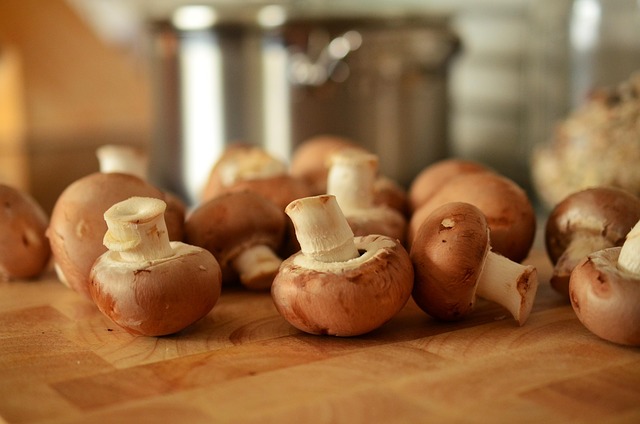Double-pane and low-emissivity (low-E) glass windows are key upgrades for achieving an energy-efficient kitchen design. They excel in insulation, keeping kitchens warm in winter and cool in summer by reducing heat transfer. Low-E glass further reflects infrared radiation, managing heat from cooking. These advancements not only enhance comfort but also align with the trend of eco-friendly kitchen designs. When selecting between these options, consider climate and budget. Proper installation and maintenance are vital to maximize energy savings and ensure long-lasting performance in your energy-efficient kitchen.
Upgrading your windows to double-pane or low-emissivity (Low-E) glass can significantly enhance home insulation, especially in the kitchen. This article delves into the benefits of these energy-efficient upgrades, focusing on their impact on modern kitchen design. We explore how they improve energy efficiency, guide you in choosing the right glass type for your budget and needs, and provide installation tips and maintenance advice for optimal performance.
Understanding Double-Pane and Low-E Glass: Benefits for Your Home
Double-pane and low-emissivity (low-E) glass are innovative window upgrades that significantly enhance home insulation. Double-pane windows consist of two layers of glass with an air or gas-filled space between them, which acts as an insulator, preventing heat transfer and keeping your home warmer during winters and cooler in summers. Low-E glass goes a step further by applying a special coating that reflects heat back into the room while allowing sunlight to pass through, resulting in reduced energy consumption for heating and cooling.
These energy-efficient windows offer numerous advantages, including lower utility bills, improved indoor comfort, and reduced environmental impact. In an energy-efficient kitchen design, for instance, double-pane or low-E glass windows can contribute to a more comfortable cooking environment by maintaining optimal temperatures, reducing the need for additional heating or cooling devices. This not only saves on energy costs but also makes your home more sustainable and environmentally friendly.
How These Upgrades Improve Energy Efficiency in the Kitchen
Upgrading your windows to double-pane or low-emissivity glass can significantly enhance the energy efficiency of your kitchen, one of the most used and important spaces in your home. These advanced window options work by reducing heat transfer, keeping warm air inside during colder months and preventing hot air from entering during warmer seasons. This results in less reliance on heating and cooling systems, leading to substantial energy savings over time.
Moreover, low-emissivity glass features a special coating that reflects infrared radiation, preventing it from passing through the window. This is particularly beneficial in kitchens, where activities like cooking and using hot water can generate significant heat. By minimizing heat gain during summer months and heat loss during winter, these upgrades contribute to a more comfortable kitchen environment while also aligning with the broader trend of energy-efficient kitchen design.
The Role of Insulation in Modern Kitchen Design
In modern kitchen design, insulation plays a pivotal role in creating comfortable and energy-efficient spaces. With an emphasis on reducing heat loss and gain, double-pane or low-emissivity glass windows have become essential components of contemporary kitchens. These advanced window options not only enhance the aesthetic appeal but also significantly contribute to overall energy efficiency.
By incorporating such insulation measures, kitchen designers can achieve a balanced interior temperature year-round, reducing the load on heating and cooling systems. This results in lower utility bills and a more comfortable cooking environment for homeowners. In today’s market, consumers are increasingly conscious of their carbon footprint, making energy-efficient kitchen design a popular trend that offers both functionality and sustainability.
Choosing the Right Type of Glass for Your Budget and Needs
When upgrading your windows to double-pane or low-emissivity (low-e) glass, choosing the right type of glass is crucial for both your budget and energy-efficient kitchen design needs. Low-e glass is coated with a thin layer of metal or metallic oxide that reflects heat back into your home during winter and keeps it out in summer, significantly improving insulation. This option is ideal for those looking to reduce their energy bills and create a more comfortable living environment.
Budget plays a significant role in this decision. Double-pane glass is generally less expensive than low-e glass due to its simpler construction. However, low-e glass offers superior insulation properties, making it a better investment in the long run, especially if you’re aiming for an energy-efficient kitchen design that reduces utility costs. Consider your climate and home’s specific needs; if you live in a colder region, low-e glass might be more beneficial, while double-pane glass could be sufficient for milder climates.
Installation Tips and Maintenance for Optimal Performance
When upgrading to double-pane or low-emissivity glass, proper installation and ongoing maintenance are key to unlocking maximum energy savings and improved insulation. To ensure optimal performance, start by sealing any gaps around the window frames using high-quality weatherstripping. This simple step prevents air leaks, which can significantly reduce the effectiveness of your new glass panels. Regular cleaning is another important aspect of maintenance. Use a soft cloth or sponge and mild detergent to wipe down the glass surfaces, avoiding abrasive materials that could scratch the coating. For tough stains, consider using distilled white vinegar mixed with water—a natural and effective cleaner for double-pane windows.
Additionally, keep an eye out for any signs of damage or warping over time. Regularly inspect the window frames and seals for any wear and tear, addressing issues promptly to maintain a secure fit. With proper care, double-pane and low-emissivity glass can significantly contribute to an energy-efficient kitchen design, offering not only enhanced comfort but also long-term savings on heating and cooling costs.
Upgrading your windows to double-pane or low-emissivity glass is a practical step towards achieving an energy-efficient kitchen design. By improving insulation, these upgrades not only enhance comfort but also significantly reduce energy costs. With proper installation and maintenance, you’ll enjoy a more comfortable living space while contributing to a greener planet. Incorporate these changes into your next renovation project for a modern, sustainable kitchen that excels in both functionality and efficiency.
